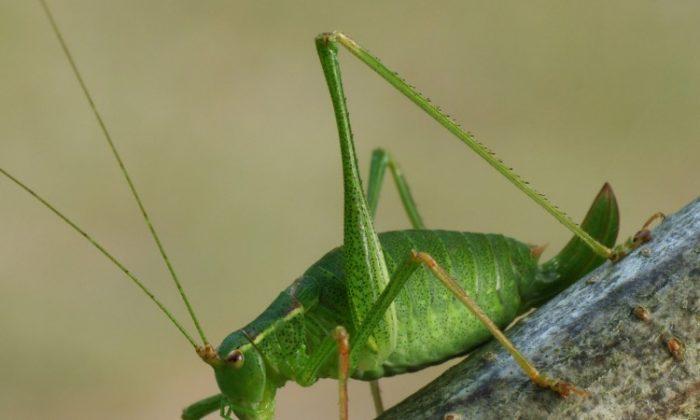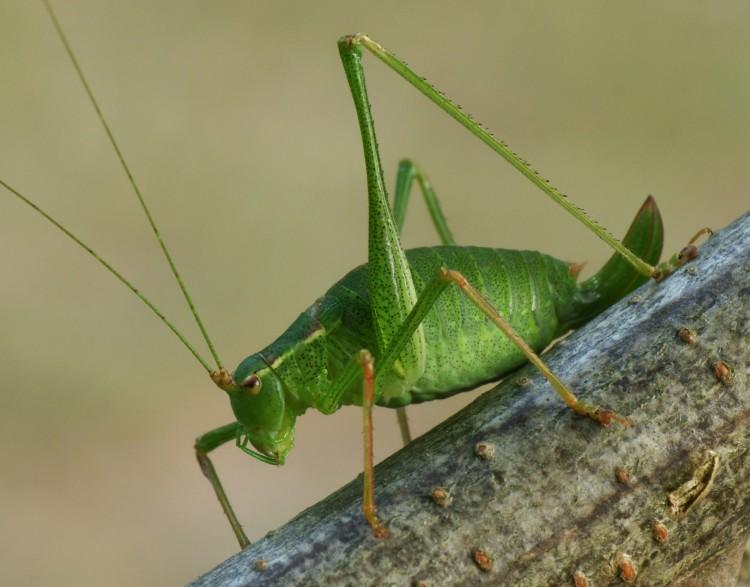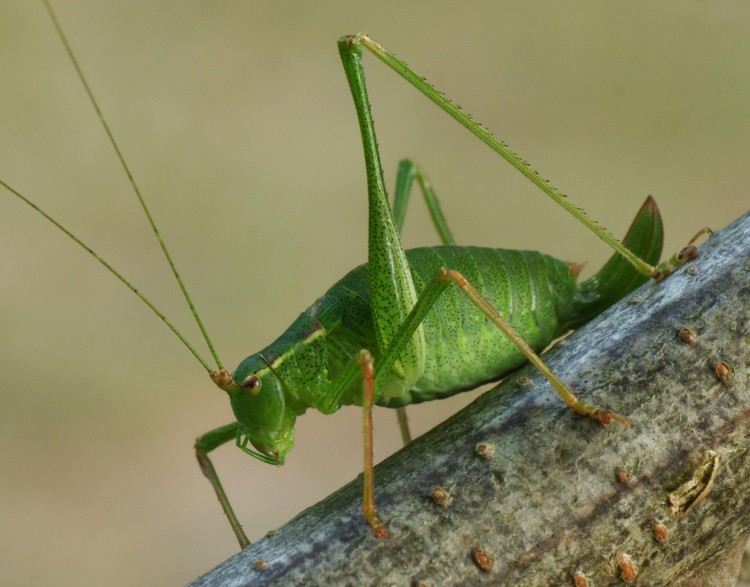The mating call of a bushcricket from the Mid-Jurassic Period has been recreated by an international team of scientists.
The fossilized specimen of the newly identified species, Archaboilus musicus, has such well-preserved wings that the researchers could observe its stridulating organs, which produce sounds when rubbed together.
By comparing these structures with those of 59 living species of bushcrickets or katydids, the team determined that this ancient insect generated calls consisting of single frequencies.
“This discovery indicates that pure tone communication was already exploited by animals in the middle Jurassic, some 165 million years ago,” said study co-author Daniel Robert from the UK’s University of Bristol in a press release.
“For Archaboilus, as for living bushcricket species, singing constitutes a key component of mate attraction,” he added, explaining that loud calls advertize a male’s presence to females, but also make them vulnerable to detection by predators.
Study co-author Fernando Montealegre-Zapata, also at the University of Bristol, has developed a special biomechanical technique that allowed the cricket’s song to be reconstructed. You can listen to it here.
He found that the calls of Archaboilus musicus were pitched at 6.4 kHz, with each bout lasting 16 milliseconds. He believes it was probably nocturnal, like all modern day katydids, with a low-pitched call that enabled long-distance communication.
“Being nocturnal, Archaboilus musicus probably escaped from diurnal predators like Archaeopterix, but it cannot be ruled out that Jurassic insectivorous mammals like Morganucodon and Dryolestes also listened to the calls of Archaboilus and preyed on them,” Montealegre-Zapata concluded in the release.
“This Jurassic bushcricket thus sheds light on the potential auditory capacity of other animals, and helps us learn a little more about the ambiance of a world long gone.”
The scientists believe that the acoustic environment back then was already quite complex with calls being made by other arthropods and also amphibians, perhaps in chorus, against the natural noise of water features and wind.
The findings were published online in Proceedings of the National Academy of Sciences on Feb. 6.







Friends Read Free